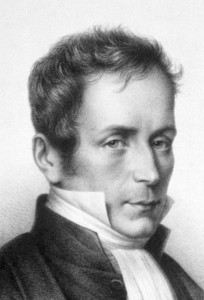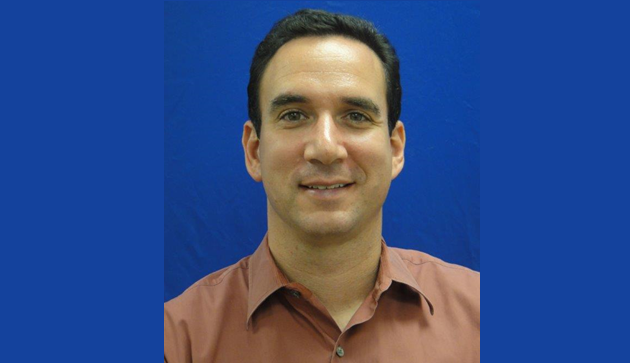I walked into the office slowly. It was my third year med school clerkship, I had learned a lot about basic outpatient medicine, prevention, focused exams, and seeing the joy in building relationships with patients. However one of the most important lessons I had yet to learn.
A middle-aged man sat in the exam room with shoulder pain. He didn’t have much in the way of other medical problems, so I honed in on the shoulder. I practiced all my maneuvers from my physical diagnosis course: empty beer can, range of motion, compare and contrast to the other shoulder. I didn’t find much of anything. So I started to walk out the room to discuss with my attending. I grabbed the door handle, then turned around and I asked him, “Oh, by the way, what’s with the BAND-AID over your eye?”
One of my favorite parables is from the book Wrong, by David Freedman. An alcoholic man searches the street at night, crawling around on all fours. He’s looking in an area lit up by a streetlight. A police officer strolls by and asks him what he’s doing. I’m looking for my keys, the man says. They both crawl on their knees. After a few minutes the officer asks him, are you sure you dropped them here. No, he says, I lost them in the park. Well, why are you looking here? That’s where the light is.
We do a lot of looking only where the light is. I can think of a lot of stories over the years, diagnostic dilemmas in particular, where I shined a light in the wrong place. In many instances it was because I never pulled off the BAND-AID; I did not ask the questions that uncover the patient’s story, Or I never lifted the gown, missing crucial parts of the exam.
I recall an unexplained abdominal pain presentation in the ER turning out to be testicular torsion. To this day, I don’t know why the patient didn’t tell us about his grapefruit scrotum, but it seemed he waited until he was asked.
Asking questions was all physicians had for centuries. The exam was largely hidden, except for the skin. Respirations or fevers were a clues. And finding the pulse was a breakthrough, but there was limited understanding of what was happening below the skin. The human body was an impenetrable temple.
Leopold Auenbrugger, a physician from Vienna, was one of the first to tap out hidden sounds. The son of an innskeeper, Auenbrugger was a gifted musician and talented physician. He likely grew up tapping kegs for his father’s inn. Finding areas of transition from dull to hollow helped determine how much wine was left in the kegs. His book in 1761 on the similar effect in the human body helped physicians reveal the art of percussion, and a more robust physical exam was born.
René Laennec(1781-1826), was instrumental in the rise of the famous Paris School of Medicine. In  discussing the exam of a female patient, in 1816 he wrote, “Owing to her stoutness little information could be gathered by application of the hand and percussion.” He rolled up some papers, placed them to the chest and to his ear, and heard heart sounds louder than with his immediate auscultation, ear to chest. Laennec, known for his work on tuberculosis, cirrhosis, and perhaps as the father of hospital medicine (we can save that discussion for a future post), was the first to use a stethoscope.
discussing the exam of a female patient, in 1816 he wrote, “Owing to her stoutness little information could be gathered by application of the hand and percussion.” He rolled up some papers, placed them to the chest and to his ear, and heard heart sounds louder than with his immediate auscultation, ear to chest. Laennec, known for his work on tuberculosis, cirrhosis, and perhaps as the father of hospital medicine (we can save that discussion for a future post), was the first to use a stethoscope.
A threshold was crossed that opened our ears to the inner music of the body. Physical diagnosis became the cornerstone of diagnosis.
In 1895, x-rays paved the way for imaging to compete and in ways supersede physical exam for diagnostics. EKGs, ECHOs, and state of the art imaging allow us to view the human bodies in ways unimaginable a few decades ago. Now we uncover and undress the patient in high tech gadgetry. The pace of innovation will only accelerate. We have the capabilities to carry an ultrasound in our pocket. Our phone is begging to become a cornerstone to the smartphone physical.
So I asked him about the BAND-AID.
He replied, “That thing? It’s just a scrape. Oh, my wife fired a pistol at me, and it grazed my forehead. She caught me sleeping around with her best friend. Umm. Actually, that’s why I’m here. You fixed my shoulder. But, I, uhh, think I need to be tested for STDs. You never know if you don’t check, right Doc?”
Oh boy.
I focused on the shoulder, and almost didn’t shine a light on what was right in front of me. I don’t know why he wasn’t more upfront. Maybe he was saving it for the attending. But I think, like Mr. Torsion, he was waiting for someone to ask. And if no one did, he wasn’t going to tell us.
It’s a challenge at times with patients in hallways in the ER, and family and friends crowded in rooms. Patients are not always comfortable revealing information. Time is crunched, healing spaces are not always conducive to a good history and physical, patients may not trust us yet with crucial information, or they are too embarrassed to share unless prompted.
Aunbrugger and Laennec would be thrilled to find the latest tools at our disposal, but certainly disappointed if we couldn’t use our most basic tools; our eyes and ears and hands when it’s just you and the patient. The diagnosis awaits us with our simple history and physical.
Ask the right questions, get the right answers. Find the story. Pull off the BAND-AID and shine the light.
You never know if you don’t check.




Leave A Comment